Diets
Back Clinic Diets. The sum of food consumed by any living organism. The word diet is the use of specific intake of nutrition for health or weight management. Food provides people with the necessary energy and nutrients to be healthy. By eating various healthy foods, including good quality vegetables, fruits, whole-grain products, and lean meats, the body can replenish itself with the essential proteins, carbohydrates, fats, vitamins, and minerals to function effectively.
Having a healthy diet is one of the best things to prevent and control various health problems, i.e., types of cancers, heart disease, high blood pressure, and type 2 diabetes. Dr. Alex Jimenez offers nutritional examples and describes the importance of balanced nutrition throughout this series of articles. In addition, Dr. Jimenez emphasizes how a proper diet combined with physical activity can help individuals reach and maintain a healthy weight, reduce their risk of developing chronic diseases like heart disease, and ultimately promote overall health and wellness.
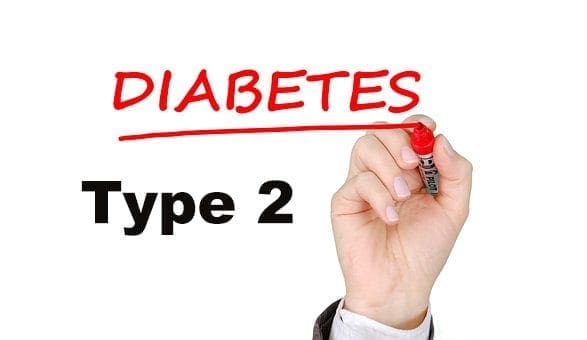
by Dr Alex Jimenez DC, APRN, FNP-BC, CFMP, IFMCP | Diets, Weight Loss
Doctor of Chiropractic, Dr. Alexander Jimenez looks at obesity in children and the risk of type 2 diabetes.
Close To 13 Million American Children & Teens Are Obese
And�new research shows they may be four times more likely than kids with a healthy weight to develop type 2 diabetes by age 25.
Between 2002 and 2005, there were 3,600 cases a year of type 2 diabetes among U.S. kids and teens, according to the Endocrine Society’s Endocrine Facts and Figures report. A large study of British children produced similar results, the researchers noted.
“As the prevalence of obesity and being overweight has rapidly risen, an increasing number of children and young adults have been diagnosed with diabetes in the United Kingdom since the early 1990s,” said study co-author Ali Abbasi, a research fellow at King’s College London.
For the study, published April 25 in the Journal of the Endocrine Society, the researchers reviewed health records of 375 general practices in the United Kingdom.
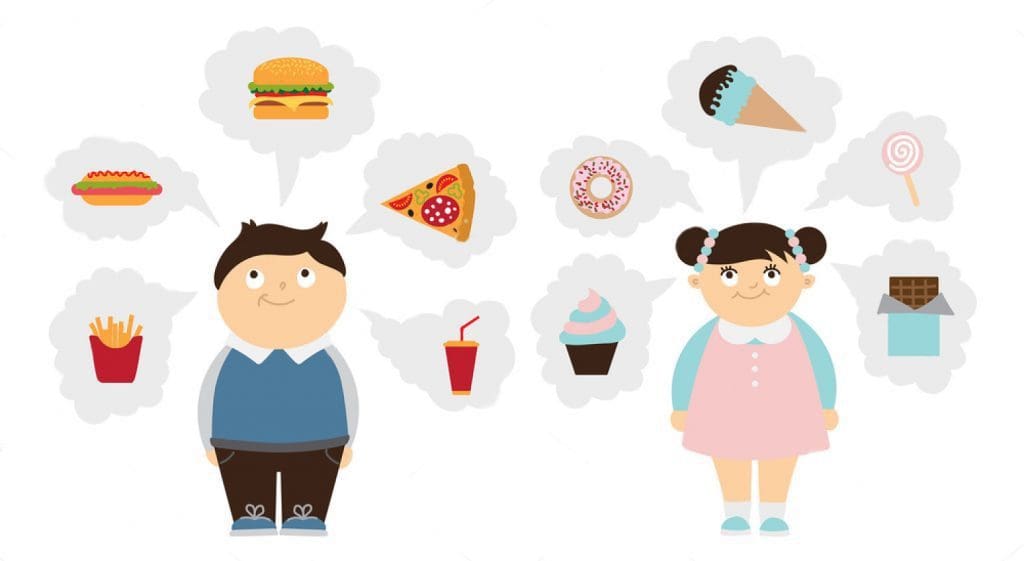
BMI Is A Measure Used To Determine If Someone Is A Healthy Weight For Their Height
The team compared the diabetes status and body mass index (BMI) of about 370,000 children between the ages of 2 and 15.
The study found that 654 youngsters were diagnosed with type 2 diabetes and 1,319 with type 1 diabetes between 1994 and 2013. Nearly half of those with type 2 diabetes were obese. There was no link, however, between obesity and rates of type 1 diabetes, an autoimmune disease, researchers noted.
“Diabetes imposes a heavy burden on society because the condition is common and costly to treat,” Abbasi said in an Endocrine Society news release. “Estimates indicate one in 11 adults has type 2 diabetes, or about 415 million people worldwide. Given that diabetes and obesity are preventable from early life, our findings and other research will hopefully motivate the public and policymakers to invest and engage in diabetes prevention efforts.”
News stories are written and provided by HealthDay and do not reflect federal policy, the views of MedlinePlus, the National Library of Medicine, the National Institutes of Health, or the U.S. Department of Health and Human Services.
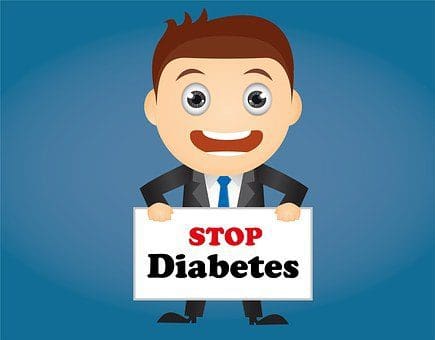
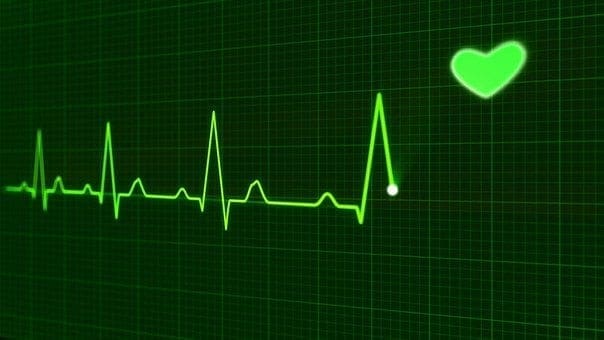
by Dr Alex Jimenez DC, APRN, FNP-BC, CFMP, IFMCP | Diets, Nutrition, Wellness
Doctor of Chiropractic, Dr. Alexander Jimenez investigates the mediterranean diet, and what it can do for people taking statins for heart attacks and strokes.
Q: How Does The Mediterranean Diet Stack Up Against Statins In Preventing Heart Attacks & Strokes?
A: Research suggests that the Mediterranean diet and statins can be effective in helping to lower the risk of potentially fatal complications of heart disease. But there has been no published scientific research in which a large number of people were given either statins or a Mediterranean-style diet at random and then followed carefully to see what became of their heart health.

As Rosemary Stanton, nutritionist and visiting fellow at the School of Medicinal Sciences, University of New South Wales, explains in an article posted by The Conversation, “Such a trial is unlikely to occur, as withholding medication from people at risk of heart attack or stroke would be regarded as unethical.”
But there is evidence that both approaches are helpful and that the optimal choice, at least for those at high risk of cardiovascular disease, would be a combination of diet and statins. Research also suggests that, for people at lower risk, lifestyle measures like the Mediterranean diet could be sufficient.
Traditionally, the Mediterranean diet includes lots of fruit, nuts, vegetables, cereals and oil from olives; a moderate intake of fish and poultry; a low intake of dairy products, red meat, processed meats and sweets; and — taken with meals — wine in moderation. (Researchers tested two versions, one with lots of olive oil and the other with lots of oil from nuts.)

“I don’t view these things as either-or,” said Dr. Meir Stampfer, a professor of epidemiology and nutrition at the Harvard T.H. Chan School of Public Health. “My advice is to start with the Mediterranean diet because it’s good for you in multiple ways — lowering risk of cognitive decline, reduction in some cancers, lower risk of diabetes — that go beyond what statins do.”
If Cholesterol Numbers Remain High Despite A Healthy Diet, Statins Or Other Medical Treatments Can Be Added
In 2009, Circulation: Cardiovascular Quality and Outcomes, a journal of the American Heart Association, reported research that showed statin therapy resulting in a 44 percent reduction in heart disease-related problems including heart attacks, strokes and deaths. (The study can be downloaded at bit.ly/2lX1tuF.)
In 2013, a large and rigorous study published by The New England Journal of Medicine found that switching to a Mediterranean diet prevented about 30 percent of heart attacks, strokes and deaths from heart disease in people at high risk. That study, which looked at two versions of the diet, can be found at bit.ly/2np3VY2.
Statin takers often wrongly think they don’t have to worry about diet and exercise.
“Quantitatively, you get more mileage from optimal exercise and diet than statins, so it’s not one or the other,” Stampfer said. “Everybody needs the diet and exercise, and some people, despite that, will still need statins. It’s not a failure; it’s not a character flaw — if you need it, you need it.”
The bottom line is that the Mediterranean diet helps even if one is taking statins and, along with other potential benefits, might help avoid the need for statins altogether.
Celia Storey added information to this report.

by Dr Alex Jimenez DC, APRN, FNP-BC, CFMP, IFMCP | Diets, Fitness
The idea that diet could have a role to play in preventing the signs of asthma is starting to gain ground, with studies highlighting certain deficiencies in patients or warning against the consumption of certain foods. On World Asthma Day, May 2, Relaxnews spoke to Dr. Bertrand Delaisi, a pediatric pulmonologist at Clinique Marcel Sembat in Boulogne-Billancourt, France, for an overview of what’s currently known on the subject.
The prevalence of asthma has increased considerably in recent decades, in parallel with changes in lifestyles and dietary habits, tending towards diets rich in carbohydrates and fat, and low in fiber.
As well as pollutants, allergens, passive smoking and air pollution, allergy specialists are increasingly interested in how diet can promote or modify the development of asthma on a physiopathological level.
Eating ham, cured sausage or smoked meats at least four times a week could aggravate the symptoms of asthma over time, concludes a study carried out by researchers at Inserm, the French National Institute of Health and Medical Research, published in January in the medical journal Thorax.
On the contrary, consuming fiber may influence the gut flora and could reduce inflammation in the bronchial tubes. A diet rich in fruit and vegetables and vitamin C — and especially vitamin D (calf’s liver, soy, egg yolks) — could, therefore, help limit the risks of asthma, according to Dr. Bertrand Delaisi, a pediatric pulmonologist at Clinique Marcel Sembat in Boulogne-Billancourt, France.
The same goes for omega-3 fatty acids, present in oily fish and other foods (walnuts, canola oil), which can relieve inflammation, including in the respiratory airways. People whose diets are rich in omega-3 have a lower risk of suffering from asthma than those whose intake is limited. They could also be beneficial to people who already suffer from the condition.
Foods containing quercetin could reduce the frequency of asthma attacks, as this antioxidant flavonoid is an anti-inflammatory. Studies carried out in vitro found that quercetin inhibited the liberation of inflammatory substances by mast cells, which play a role in allergic reactions, mirroring certain anti-asthma medications. This antioxidant is found in onions, mustard oil, tea and apples.
An estimated 300 million people worldwide suffer from asthma.
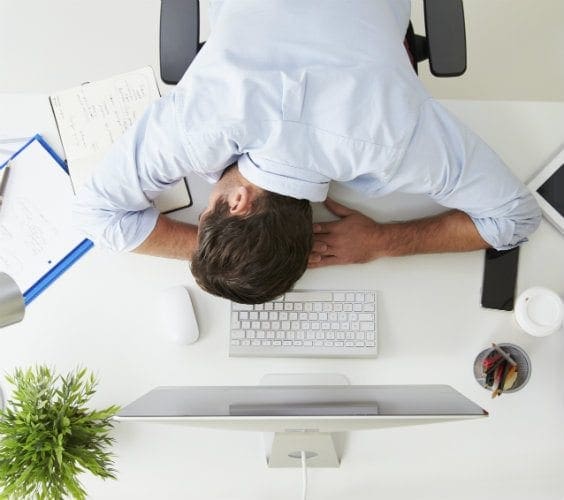
by Dr Alex Jimenez DC, APRN, FNP-BC, CFMP, IFMCP | Diets, Fitness
When mid-afternoon fatigue sets in, it’s easy to reach for a cup of coffee or a sweet treat for a quick boost. Unfortunately, the energy boosting effects are short-lived and often lead to a crash later in the day.
Instead, experts say it�s best to opt for a snack that’s rich in protein, fiber, and complex carbohydrates for a natural energy boost. Here are nine of the best options for energy-boosting snacks and meals that will keep you alert throughout the entire day.
Nuts. Almonds, pistachios, and other nuts contain important nutrients like magnesium and B vitamins which help convert food to energy. Pistachios have a powerful combination of protein, fiber and heart healthy monounsaturated fats, making them a great snack choice.
“Research shows that people with low magnesium levels tend to tire more quickly during exercise due to magnesium’s role in energy metabolism,” dietitian Rachel Berman says. A lack of B vitamins can cause fatigue, irritability and poor concentration. Berman suggests one serving, or about 23 nuts, to keep calories low.
Whole grains. “Thanks to fiber, whole grains help prevent the blood-sugar crashes that happen after consuming refined or simple carbohydrates,” says Berman. Whole-grain carbohydrates, like popcorn, are a great afternoon snack choice. The volume of popcorn also keeps you satisfied longer than chips or crackers. Try popping your own and adding herbs and spices, instead of butter and salt.
Nut butters. Peanut butter and almond butter can provide a great energy boost. They’re filled with health fats, protein and fiber, which help keep blood sugar levels stable. Berman says make sure you avoid brands with added sugars and stick to just a 2-tablespoon serving.
According to a study done at the University of Cambridge in England, protein also activates cells that help keep you awake. Researchers found that the cells responsible for our energy levels respond better to amino acids in proteins than in other nutrients.
Fish. Salmon is filled with omega-3 fatty acids, nutrients that can boost energy and mood. Berman says the nutrients found in fish have also been found to improve memory and reduce depression. The healthy fats found in fish like salmon also help lower blood pressure and bad cholesterol, making them heart healthy choices.
Bananas. These sweet treats are a great source of fiber, B vitamins, and potassium � nutrients that promote sustained energy. Bananas make for a great pre- and post-workout snack. Berman suggests a banana with a cup of yogurt for an energizing snack with fiber and protein for sustained energy.
Kale. This leafy green contains the amino acid L-tyrosine, which is great for an energy boost. The leafy green also contains fiber and a number of antioxidants which help stabilize blood sugar, says Berman.
Oatmeal. A dish of this high-fiber, filling breakfast staple can provides lasting energy all day long. Dieticians recommend looking for breakfast foods that contain at least 3 grams of fiber per serving. Options can include: oatmeal, whole-grain breads or pancakes, high-fiber breakfast cereals and quinoa.
Hummus. Made of garbanzo beans, sesame-based tahini, olive oil, and lemon, hummus is full of nutrients that contribute to high energy levels. The fiber and protein in the beans help stabilize blood sugar and boost energy. Use hummus as a veggie dip or a sandwich spread for a great snack or healthy lunch.
Greek yogurt. Compared to regular yogurt, Greek yogurt contains twice as much protein, making it a great breakfast or snack option. “The thick, indulgent texture is the perfect canvas for a variety of toppings that can make it even more substantial,” says dietitian Kari Kooi. Add fruit, nuts, or low-calorie granola to make it even more nutritious.

by Dr Alex Jimenez DC, APRN, FNP-BC, CFMP, IFMCP | Gluten Free Diet
A new study found that gluten-free diets could increase cardiovascular risk in people without celiac disease. The study claims that gluten-free diets among people without celiac disease is not associated with risk of coronary heart disease, but such diets result in a low intake of whole grains, which are linked to cardiovascular benefits.
Researchers say that gluten-free diets among people without celiac disease should not be encouraged, as people could miss out on the benefits of whole grains.
Researchers say that gluten-free diets among people without celiac disease should not be encouraged. Image credit: iStock.com / Everyday Health
People with celiac disease, on the other hand, usually have to follow gluten-free diets because the protein found in wheat, barley, and rye can cause them to develop gastrointestinal issues.
Gluten-free diets should not be encouraged to people without celiac disease
The study was published in the BMJ on May 2, and researchers noted that cutting out gluten unless medically necessary can increase a person�s risk of cardiovascular problems. The researchers analyzed data from 64,714 women and 45,303 men who worked in the health industry, each of whom had no history of heart disease.
Subjects were asked to fill a detailed food questionnaire in 1986, and they were required to update it every four years until 2010. The scientists noted that they saw no significant association between gluten intake and heart disease risk.
�Long term dietary intake of gluten was not associated with risk of coronary heart disease. However, the avoidance of gluten may result in reduced consumption of beneficial whole grains, which may affect cardiovascular risk,� wrote the researchers on the study.
Gluten is a storage protein found in wheat, rye, and barley, and it is known to trigger inflammation and intestinal damage in people with celiac disease. According to the researchers, celiac disease is present in 0.7 percent of the U.S. population, and because it is associated with an increased risk of coronary heart disease, patients are recommended to shift to a gluten-free diet.
 Gluten is a storage protein found in wheat, rye, and barley, and it is known to trigger inflammation and intestinal damage in people with celiac disease. Image credit: Thankheavens.com.au
Gluten is a storage protein found in wheat, rye, and barley, and it is known to trigger inflammation and intestinal damage in people with celiac disease. Image credit: Thankheavens.com.au
The study claims that currently many people reduce gluten in their diet because they believe that it will lead to general health benefits. A national survey showed that in 2013 nearly 30 percent of adults in the U.S. reported that they were cutting off or reducing their gluten intake. However, the researchers noted that despite the rising trend in gluten restriction, no study has linked gluten with the risk of coronary heart disease in people without celiac disease.
�Although people with and without celiac disease may avoid gluten owing to a symptomatic response to this dietary protein, these findings do not support the promotion of a gluten restricted diet with a goal of reducing coronary heart disease risk,� warned the researchers.
Researchers concluded their study saying that it found no evidence of gluten diets and coronary disease among male and female health professionals analyzed for more than 25 years and that further research is needed to investigate the link between gluten and cardiovascular problems, as their study was merely observational.
Source: The BMJ

by Dr Alex Jimenez DC, APRN, FNP-BC, CFMP, IFMCP | Diets, Fitness
You may think you eat food to fuel your body but that’s not all it does. Emerging research shows that what you eat actually influences the composition of your microbiome, which can help you feel healthier and lose weight.
“We have entered the gut-health era of diet and nutrition and it will be here for a long time indeed. The science is simply too persuasive to suggest otherwise,” top expert Jeannette Hyde says.
Microbiome is the term used for the bacteria, particularly those living in the intestines.
Hyde, a London-based certified nutritional therapist, is the author of “The Gut Makeover: 4 Weeks to Nourish Your Gut, Revolutionize Your Health and Lose Weight,” a popular book in the U.K., which was published here on May 2.
Here are excerpts from her recent interview with Newsmax Health.
Q: Why is our microbiome important?
A: Our microbiome communicates with our hormones to keep them balanced, it influences how aggressively we extract calories from food eaten, and it also communicates with our immune system and signals to our brain.
Q: What is a healthy microbiome like?
A: A healthy microbiome is dominated by beneficial bacteria and contains lots of different varieties of bacteria. An unhealthy microbiome is dominated by nasty types of bacteria, with the good ones left in the minority, and also has little variety of bacteria.
Q: What health problems does an unhealthy microbiome cause?
A: When the microbiome is out of balance, or deranged, we may experience digestive issues such as chronic bloating, wind, loose stools, constipation, or alternating between the two.
Q: How does a healthy microbiome help you?
A: A healthy microbiome is important to have a healthy microbiome keeping your weight, mood, and immune system in check. Early studies are also showing that eating foods to enhance the microbiome can lead to improvements in memory and mood, and autoimmune disorders to name a few
Q: How does the typical American (Western) unbalance the microbiome?
A: In the Western diet we often have a lot of grains (usually dominated by wheat) so there is very little variety of color, and the color beige dominates. It’s also often high in sugar, artificial sweeteners, and unhealthy trans fats. Artificial sweeteners can disrupt your microbiome too.
Q: Why is eating for your microbiome better than counting calories for weight loss?
A: The microbiome has been shown to influence on our hunger hormones, so a deranged microbiome could knock your hunger hormones out of balance, giving you cravings all the time.
Q: What is your diet for a healthy microbiome?
A: My diet features a low-grain Mediterranean diet in which you bombard your gut with diversity of plants, satiating proteins, and good oils such as extra virgin olive oil. After 2 weeks, you can add in foods that have healthy bacteria, like fermented milk kefir and smelly unpasteurized cheese Roquefort full of bacteria to plant in your gut, or sauerkraut or miso if you can’t tolerate dairy.
Here are Jeannette Hyde’s 6 tips for a healthy microbiome:
Bombard your body with diversity. It really can make food enjoyable having lots of different ones to look forward to. Get into the habit of trying to get as many different types of vegetables into each meal – chop lots of different fresh herbs on top, throw over a handful of pomegranate seeds, grate some carrot.
Drink fermented milk kefir every day like medicine. It’s a convenient and delicious way to get tens of billions of beneficial bacteria into your gut in one sitting. You can blend it in a blender with fruit and nuts or mix it with extra virgin olive oil, lemon juice and a bit of garlic for a delicious salad dressing.
Make cold potatoes your friend – potatoes have been demonized for too long! They can be very good for your microbiome and consequently your weight. When potatoes cool down they form resistant starch, a type of fiber which cannot be digested in the top half of the digestive tract, making you feel full, and survive all the way to your colon where you gut microbes dine out on them.
Enjoy flax seeds. Often fairly inexpensive, flax seeds, known also as linseeds, are super foods for your gut bacteria and produce a fuel to keep your gut lining in good repair. You can use them in a shake each morning. It’s simple good housekeeping for the microbiome.
Eat Slowly. Eating slowly is so important to good digestive health. If we wolf down our food, undigested food can reach the colon and lead to a deranged microbiome, bloating, hunger and more. It’s such a simple action, and costs no money, and can deliver big results.
Try a 12-hour overnight fast. This is an easy way to give your microbiome a good long stretch to regenerate, and can help rebalance your hunger hormones so you feel less hungry generally.

by Dr Alex Jimenez DC, APRN, FNP-BC, CFMP, IFMCP | Diets, Fitness
Mothers who eat a diet high in fructose-containing sugars while pregnant or breastfeeding are more likely to have a child with fatty liver disease, increasing their chances of developing obesity or type 2 diabetes according to new Australian research.
Carried out by the University of South Australia, the animal study looked at female rats given water supplemented with fructose-containing sugars including sucrose or high fructose corn syrup (HFCS) before, during and after pregnancy.
The amount of sugar was equivalent to levels found in standard soft drinks.
After they were born, the offspring were either weaned by a mother who had access to the fructose-containing beverage, or by a mother who had access to water only.
The team then analyzed the offspring’s body weight, fat mass and glucose control and analyzed their tissues to find out the amount and type of fat in their livers.
They found that the offspring from mothers who had consumed the drink high in fructose were more likely to have a fatty liver, and that this was especially true for offspring who were weaned by mothers who drank the fructose-containing beverage.
Fatty liver can also have a negative effect on metabolic health, potentially leading to obesity or type 2 diabetes in the future.
The results also suggest that the timing of exposure to fructose sugars is important, and highlights the importance of diet for breastfeeding mothers.
Dr Sheridan Gentili, lead investigator of the study cautioned that, “As there are differences in physiology between humans and rodents, we need to be careful when translating this research directly to humans.”
However, she also added that, “This study highlights the importance of maternal nutrition during the lactation period. Guidelines for consuming added sugars or sugar-sweetened beverages during pregnancy should consider this.”
As well as soft drinks, many cereals and other processed foods also contain fructose-containing sugars.
The study can be found online published in The Journal of Physiology.









 Gluten is a storage protein found in wheat, rye, and barley, and it is known to trigger inflammation and intestinal damage in people with celiac disease. Image credit: Thankheavens.com.au
Gluten is a storage protein found in wheat, rye, and barley, and it is known to trigger inflammation and intestinal damage in people with celiac disease. Image credit: Thankheavens.com.au





